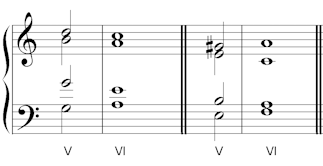A cadence is a way to mark the end of a phrase (in much the same way that commas and full stops are used to mark the end of a clause in writing). In traditional harmony, cadences are constructed using a standard chord progression combined with a slowing of note values used, which helps to bring the phrase to an end.
In this Bach Chorale (no.78), the phrase end is clearly marked with a pause mark, but even without the pause marks, the cadences will be easy to hear, because they use standard chord progressions combined with a slowing of note values.
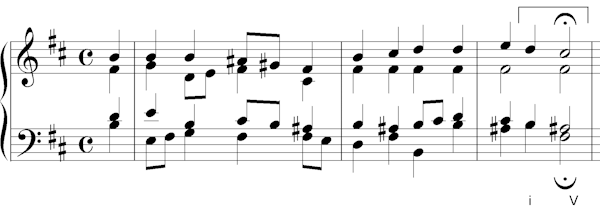
There are four standard cadences in traditional harmony. In the UK their names are:
- Perfect cadence (chord V moving to chord I)
- Plagal cadence (chord IV moving to chord I)
- Imperfect cadence (any chord moving to chord V)
- Interrupted cadence (chord V moving to chord VI)
Perfect and plagal cadences sound “complete”, because they end on the tonic chord. Imperfect and interrupted cadences sound like the music will continue. Interrupted cadences sound “surprising”, because we are usually expecting chord V to move to chord I at a cadence.
Writing Cadences in SATB
In traditional harmony exercises, cadences are most often written in root position. (Cadences which are less important might be written with inverted chords however).
- Space the notes in the chord correctly. Allow a large gap between the bass and tenor, but keep the upper three parts relatively close together.
- Double the correct notes. Do not double the third of the triad (except in VI, when it moves to or from V).
- Use smooth voice leading – each part should move by the smallest possible distance, going into the following chord. None of the upper three parts should ever move by more than a 3rd.
- Avoid augmented 2nds and consecutive (parallel) 5ths and octaves. More about those here.
- Usually the final chord of a cadence lands on a strong beat.
Here are examples of each of the cadences, in C major and in A minor.
Perfect Cadences
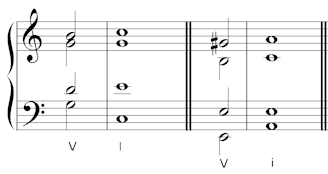
Plagal Cadences
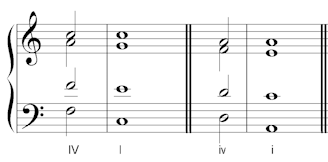
Imperfect Cadences
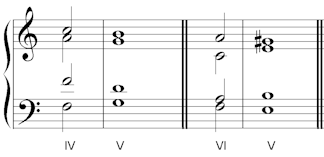
Interrupted Cadences
